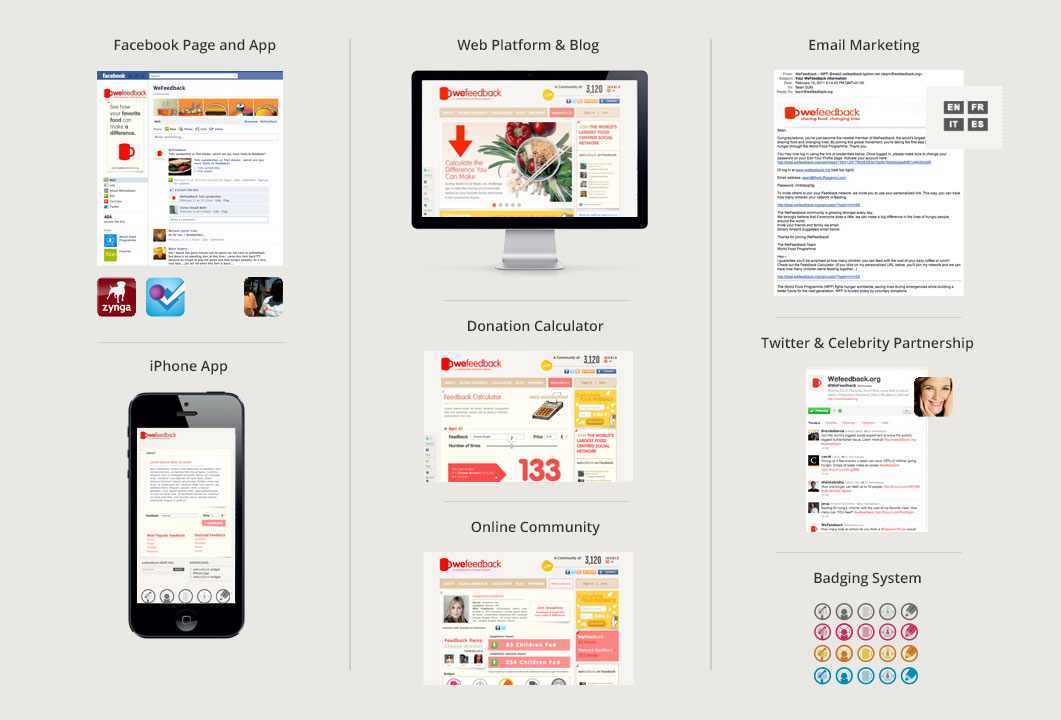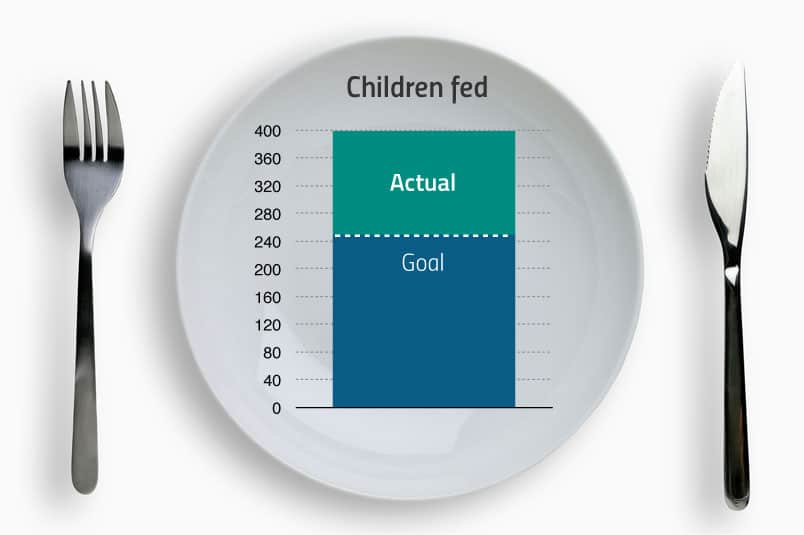United Nations
About
The United Nations World Food Programme (WFP) is the world’s largest humanitarian organizationObjective
Create an online web initiative targeted at the US and Europe to increase awareness and understanding of the WFPSolution
A community-based website built around brand attributes: the love of food and sharingOverview
Giving the world’s largest humanitarian organization a public face
The United Nations World Food Programme (WFP) is the world’s largest humanitarian organization – yet it is virtually unknown. The UN asked Duffy Agency to create a web-based solution that would give the organization an appealing and engaging profile toward the public. The effort was global, but we started by targeting the US, which has the largest private donor base.
Duffy Agency conducted research into why people give to charity and what mental obstacles prevent them from doing so. We soon realized that the approach the WFP and others use to raise funds offline simply doesn’t work on the web. So we devised a new approach to online charitable giving.
Our idea involved creating an online movement anchored in the love of food and sharing. We created a new brand for the movement that allowed us to construct a more contemporary, appealing brand image than would have been possible otherwise. We called it WeFeedback and it was about appreciating great food and giving back.
We developed a community-based website around our research findings and expanded it to a complete web platform that included content marketing and social media programs. The project was divided into three distinct phases: 1. Launch; 2. Community building; and, 3. Engagement.
Take-away
- For centuries, charities have leveraged guilt to drive donations. This tactic doesn’t work well online. You can guilt a person into giving on the street or in traditional media where you can interrupt them and make them attend to your message. But this does not apply online, where the user seeks out content and very few seek out or share content that makes them feel bad or guilty.
- A dozen other tips to charitable giving online:
- Giving is not a rational process, nor is it purely altruistic. The mental drivers are emotional and often self-serving. All giving, although charitable, still has an unspoken, subconscious element of “what’s in it for me?”
- All things being equal, an emotional appeal will always draw more response than a rational appeal.
- People prefer causes that reflect back on them favorably (i.e. reinforce their self-image and identity).
- People have a strong affinity to causes that have touched their lives and are part of their self-image (e.g. diseases that loved ones have died from). This is a challenge for causes that are foreign to potential donors.
- The bystander effect: A feeling of anonymity keeps many people from giving. Peer pressure, personalization or otherwise singling individuals out of the crowd drives up donations.
- People are more likely to contribute to a cause that they perceive other people are giving to, particularly their peers. Feedback helps.
- The “drop in the ocean” effect: With a massive problem, people are reluctant to give because they feel it won’t make a difference in the big picture.
- People give less proportional to the blame they attribute (often irrationally) to the people suffering.
- People are more inclined to give to charities where they can see very specifically and visually what their money will do.
- There is a perception that donations to most charities go largely to administration and bureaucracy, and very little gets to the people.
- For people to make a small donation, they aren’t willing to put a lot of effort into the payment system.
- Although irrational, people are more likely to give to cause that claims to save 80% of 1000 victim’s lives than one that claims to save 5% of 1,000,000 victims. That’s the difference between saving 800 or 50,000 people.
[/take-away]
Countries
![]()
![]()
![]()
![]()
![]()
![]()
![]()
![]()
Scope
- Strategic Consulting
- Digital Creative
- Online Management
- Training
Tactics
First we researched charitable giving to understand how and why people give online

Then we applied our insights into a concept called WeFeedback that was a movement fueled by individuals passion for food and sharing

Impact
Phase 1
Redefined online giving conventions
30,000+
Organic unique visitors a day
400,000+
Children fed via site donations
160%
Of donation goal achieved
Result
Online donation goal exceeded by 60% during launch

This was an extremely ambitious project that came in on schedule and under budget. More importantly, it fed over 400,000 children exceeding the project goal by over 150,000 meals.

